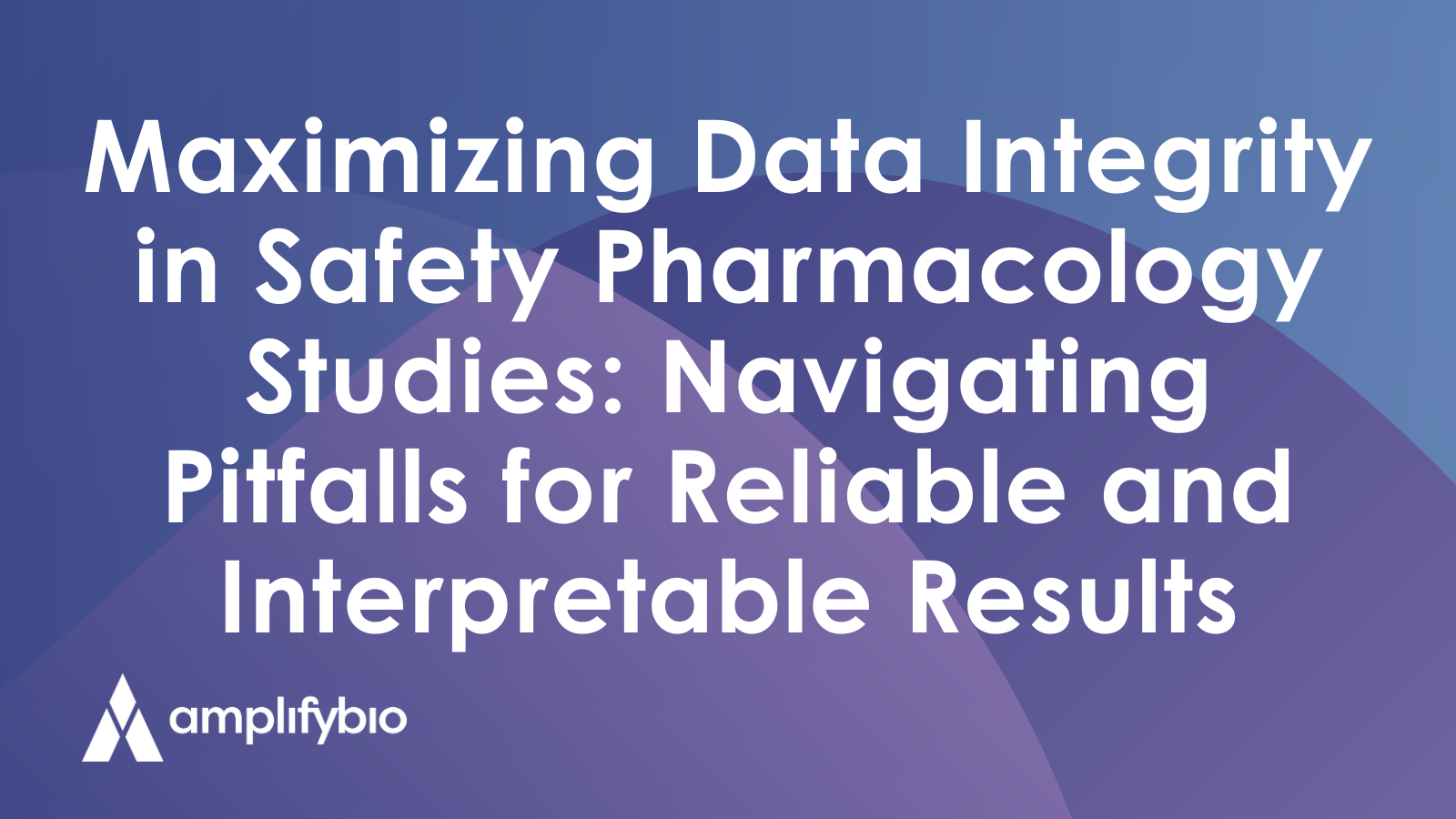
Maximizing Data Integrity in Safety Pharmacology Studies: Navigating Pitfalls for Reliable and Interpretable Results
By: Dr. Michael Stonerook
Safety pharmacology studies play a crucial role in drug development by assessing new compounds’ potential risks and effects on various physiological systems. However, these studies can encounter several pitfalls that may lead to disruption and compromised data interpretation. While it is essential to design robust studies, over-designing pivotal studies can also be a pitfall. Including an excessive number of animals or collecting an extensive range of parameters can introduce unnecessary complexity and increase variability in the data. A thoughtful and well-structured study design, focusing on the most relevant parameters, is essential to obtain reliable and interpretable results. This blog will discuss some common sources of disruption to data collection in safety pharmacology studies and offer insights on addressing them effectively.
Safety pharmacology studies play a crucial role in drug development by assessing new compounds’ potential risks and effects on various physiological systems. However, these studies can encounter several pitfalls that may lead to disruption and compromised data interpretation. While it is essential to design robust studies, over-designing pivotal studies can also be a pitfall. Including an excessive number of animals or collecting an extensive range of parameters can introduce unnecessary complexity and increase variability in the data. A thoughtful and well-structured study design, focusing on the most relevant parameters, is essential to obtain reliable and interpretable results. This blog will discuss some common sources of disruption to data collection in safety pharmacology studies and offer insights on addressing them effectively.
-
- Consider Duration of Data Collection: The timing of pharmacodynamic effects cannot always be predicted. Compounds with long absorption times and long half-lives don’t always have pharmacodynamic activity in synchrony with pharmacokinetic behavior. Modern data collection systems are more than capable of collecting 100% of data streams for the maximum period needed. Parsing of data into more manageable segments can be done post-collection. For example, collecting head-out plethysmograph-based respiratory data in rats that are acclimated to the collection conditions is best accomplished as a continuous collection for the entire period, e.g., 4 hours, rather than to collect multiple times for several minutes at 1 hour, 2 hours, and 4 hours with removal between collections as it takes even acclimated rats 15-30 minutes to settle to a relaxed state after handling.
- Consider Behavioral Factors Influencing Physiological Parameters: Physiological parameters of the cardiovascular, respiratory, and central nervous systems are highly influenced by behavioral factors in all species. It is crucial to consider the impact of behavioral factors during experimental sessions. For example, new chemical entity (NCE) compounds that may have cardiovascular effects will commonly have a Tmax from one to six hours post-dose depending on its absorption rate. Activities scheduled for this period (feeding, observations, blood collections) will cause excitement in the study animals and compromise the observation of any cardiovascular effects.
- Consider Attempting to Collect Concurrent Parameters: Animals that are trained to the experimental conditions, particularly those that involve some type of positioning, tend to exhibit less variability in data interpretation once the investigational compound is introduced. Progressive normalization of physiological data occurs as animals acclimate to the experimental settings over subsequent training sessions before the first dose administration. In one example, baseline data collection for the first day of dosing in NHPs recorded all subjects with heart rates greater than 150 beats/min (a normal relaxed heart rate is 80-120 beats/min). When investigated, it was determined that the four animals had been relocated to the study room within the previous 48 hours. This was insufficient time for the animals to acclimate to the room and the new orientation of conspecifics in the cages. As a result, study day one was postponed until that acclimation could occur.
- Consider Dose Routes: The choice of dose route can significantly impact the timing and quality of physiological data. Oral, intramuscular, or subcutaneous doses typically have extended Tmax times, often in hours, which would allow for disturbances, i.e., technical staff, to be eliminated from the study room post-dosing well before the expected pharmacodynamic effects occur, and the animals can be restored to calm behaviors. On the other hand, intravenous, intraperitoneal, and intrathecal doses may have immediate pharmacological effects within minutes, necessitating strategies for remote dose delivery to minimize human presence and prevent interference with the physiological data quality. Depending on the species, conditions can be set up that allow for acclimation periods and dosing to be performed from a discrete distance.
- Consider Duration of Data Collection: The timing of pharmacodynamic effects cannot always be predicted. Compounds with long absorption times and long half-lives don’t always have pharmacodynamic activity in synchrony with pharmacokinetic behavior. Modern data collection systems are more than capable of collecting 100% of data streams for the maximum period needed. Parsing of data into more manageable segments can be done post-collection. For example, collecting head-out plethysmograph-based respiratory data in rats that are acclimated to the collection conditions is best accomplished as a continuous collection for the entire period, e.g., 4 hours, rather than to collect multiple times for several minutes at 1 hour, 2 hours, and 4 hours with removal between collections as it takes even acclimated rats 15-30 minutes to settle to a relaxed state after handling.
Contact Us
As an expert contract research organization (CRO), AmplifyBio leverages decades of experience to create modern commercial drug development solutions. From preclinical CRO needs to cell and gene therapy and advanced therapy testing, our accredited team designs innovative paths to produce globally recognized studies, services, and more.

